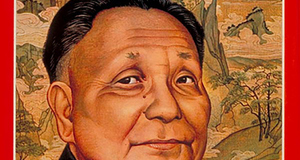Featured Article:Corruption Driven Reform: China's Economic Reforms in the Post-Mao PeriodHow Corruption Helped Reforms: Channels of Corruption MotivesAs the two alternate hypotheses were rejected, what remains is the paper’s proposed argument. Local officials’ acceptance of reform, as well as local developmental urges – the driver behind the Chinese economic reform – was made possible by the opportunities of local officials to engage in corruption. In other words, local cadres showed green lights to the reform because they saw profitable, if illicit, opportunities that outweighed the initial losses in social status and Mao-era privileges. But what exactly are the mechanisms of these corruption motives? This paper argues that corruption facilitates local support for the marketization reform through several channels, among which include a channel of exit, a channel of compensation, and a channel of vested interests. Corruption as ExitHirschman (1970) proposes that members of an organization can respond to perceived decline of their organizations through two main methods. They can either “voice” – to speak out about the issues they have with the way things are – or “exit” – to abandon the organization and its mission altogether. These two options were technically available to the conservative Communist cadres who felt disillusioned with their Party’s turn toward capitalism, although in practice, exiting was not really a choice. Lacking a means to safely “exit” the Party, these cadres’ only choice left would be to express their dissatisfaction with the reforms (most likely through joining Hua’s conservative camp). The existence of corruption opportunities re-enabled the “exit” option, by giving cadres a chance to disassociate themselves with the work of the Party while not necessarily quitting it. Taken to a further extreme, corruption could also act as a vehicle for the disillusioned to “get back” at the government without fear of excessive persecution. Corruption as Compensation As the reforms took place, the local officials had to surrender several of their Mao-era privileges. At the same time, though, their roles also changed dramatically. Previously limited to political and administrative tasks, now these officials could extend their functions to the economic arena, as the private sector had been legitimized and private investments were pouring in from both within and outside the country. More significantly, the reforms put huge amounts of money and economic prizes into their discretion. First, there was the dual-track system that came into being in 1981. Essentially a state of co-existence between the state-owned and private-owned sectors, the dual track resulted in price distortions where key commodities and materials could be bought at lower “planned” prices and resold at higher “private” prices (Johnston, 1997). Second, there was also the policy of fiscal deregulation, which delegated tax-collecting responsibilities from the center to the provinces and enabled local discretion in the use as well as the retention of their tax revenues. Finally, dismantling the State-owned enterprises gave local officials another big economic pie to distribute under the name of privatization. All these newfound leverages came in at a pace that regulations and central controls could not keep up with – or did not keep up with. Property rights, for example, remained ill-defined, and so did business practices and bureaucratic standard-operating-procedures (Johnston, 1997). In fact, even anti-corruption policies – the centerpiece of the government’s anti-corruption machinery – had not evolved much at all from the Revolutionary-era reliance on slogans, moral exhortations, and the public but infrequent show-trials of major offenders (Johnston, 1997). Inevitably, this resulted in an increase in available opportunities for rent-seeking and other corrupt behaviors, which equal new avenues for cadres to compensate themselves for the losses that the economic reforms incurred. They could, for example, hand out accesses to cheap “planned-price” goods in exchange for bribes, or tamper with account books to embezzle directly from the provinces’ funds, which were, thanks to the reforms, put right under their control. These behaviors were not limited to civilian bureaucrats – military officials in the People’s Liberation Army, both central and local, had their shares of spoils, too (Mulvenon, 1998). Corruption as Creating Vested Interests As a means to compensate local government officials, corruption may earn their acquiescence to the reforms. However, to make these officials actually embrace the reforms and pursue it with such enthusiasm, corruption needed to influence them through another channel – a channel that could create vested interests not only in the introduction of reforms, but also in its maintenance and expansion. The foundation of this channel of corruption motives lies in the market-centered interpretation of corruption which states that A corrupted civil servant regards his public office as a business, the income of which he will… seek to maximize. The office becomes a—maximizing unit. (van Klaveren, 2002) Under this interpretation, a corrupted provincial leader would be seen as a service supplier: his roles and functions thus became his for-sale services, and the amount of bribe his selling price. Prior to reforms, the demand side of this market consisted mostly of individuals seeking political favors and privileges. As reforms took place, however, an entire new group of “clients” emerged: Private entrepreneurs, both domestic and foreign, who sought entrance into the province as well as favorable accesses to limited resources and credits. For these clients, the value of the services equaled the potential profit of doing business in that particular province, while their prices were weighed against two alternatives to bribery: One, to get these privileges legally, and two, to relocate to another province, or even to outside China. If it is indeed the case that corrupted local leaders wanted to maximize their incomes, they could not simply ignore the demand side of the market. Leaders could raise legal barriers easily to make it more costly not to bribe, but given the other alternative to bribery, this would not really work: Entrepreneurs who perceived the legal procedures as too complicated and the bribes too unreasonable could simply find somewhere else to do business. Thus, to attract clients, local leaders would have to raise the value of his services, which also means making business more profitable and easier for potential entrepreneurs. This in turn would lead to the adoption of a pro-business stance and the easing of non-bureaucratic barriers to entry – lowering tax, improving infrastructure, reducing labor and environmental regulations, and so on. To maximize their income from bribery, local government leaders in China would thus become very sensitive to the needs of the private sector. More than simply letting reform happen, these leaders sought to encourage it by directing the flow of resources, credits and investment so as to promote the profitability of local businesses. The more profits firms made, the higher the value of the leaders’ services became, and the more profits they made for themselves. As a result, the interests of local leaders could become aligned with those of entrepreneurs through bribery and reinforced through repeated interaction into a stable official-entrepreneur partnership. This entire process also turned these government officials into CEOs of their own province-sized mega industrial-commerce complexes. Did corruption motives exist in reality? Some empirical evidence The channels suggested in this paper only present some possible ways in which corruption motives can influence local officials’ attitude to reforms. They should not be interpreted as an exhaustive list, nor taken prematurely as what actually happened in post-Mao China. To come to that conclusion, further empirical evidence is definitely required. There is absolutely no question that corruption existed during China’s economic reform and had been on the rise in both frequency and intensity. It is also almost a consensus that anti-corruption policies have been inconsistent and ineffective due to the entrenched interests of powerful elites in the corrupt status-quo (Gong, 1994; Sun, 2004). Less clear, though, is the question of whether these corruption incidents functioned according to the logic that this paper suggests. Given scarcely any documentation of provincial Communist cadres’ thought process behind their corruption behaviors, and that exposed anti-corruption incidents are often deeply politicized (Johnston, 1997), it is impossible to determine whether corrupt cadres engaged in corruption truly as a means of “exit” or not. The first channel therefore, at least for the time being, remains on the realm of speculation. On the other hand, the other two channels are much better supported by empirical evidence. To begin with, evidence consistent with the compensation channel of corruption includes observation of (1) a rise in corruption at local levels during reform, and (2) a shift in the types of corruption. With regard to the corrupt officials’ background, Sun noted that reform-era corruption began at the regulatory offices of the traditional planned economy, and then moved toward chief executives at local levels as the reforms progressed (Sun, 2004, p. chapter 1). In addition, whereas in the pre-reform period, transgressions typical of a planned economy such as privilege seeking dominated, such forms of corruption had been largely overshadowed by new material-based methods, most notably bribery and embezzlement. From occupying a measly 1% of all corruption cases in 1979, these two quickly rose to 70.7% in 1986, 83.9% in 1989, and altogether accounted for more than half of all corruption cases since the reform through the 1990s (Sun, 2004, pp. 38-42). Admittedly, these evidences are only indirect: on their own they cannot point out whether these corrupt acts were enough of a compensation for the officials’ losses. Nevertheless, they show a pattern that is consistent with our expectation: Local governments did indeed engage more in corruption following the reforms, and they did so through methods that created direct illicit material, as opposed to nepotistic gains in status.6 While the shifts in the type and origin of corruption lent some support to the compensation channel, the vested-interest channel is consistent with observations of two phenomena of China’s political environment. For one, it was the rise of the Princelings (taizi dang) – descendants of high ranking Party members – into entrepreneurial prominence. Previously, these Princelings have enjoyed extraordinary political power within the Party (Xiang, 2012), but in the post-reform years, their influence has extended to the private sector as well. Major businesses/economic institutions currently controlled by these Princelings include, but are not limited to, the State Development Bank of China, China Satellite Communications Corporation, the automobile firm Shanghai Auto, and the telecommunication service provider China Unicom (New York Times, 2012; Wall Street Journal 2011). Beside the Party elders’ direct descendants, the businesses of prominent CCP leaders’ family members (e.g. Wen Jiabao’s – see New York Times, 2012) were another demonstration of the close tie between cadres and entrepreneurs in post-reform China. For another, empirical studies of the provincial dynamics during the reform demonstrated that indeed there existed fierce competition between provinces for more economic growth and foreign investment. Among these studies, Gallagher (2004) observed that in an effort to compete for foreign direct investment, local governments and Party-sponsored trade unions frequently colluded with entrepreneurial managers to liberalize labor policy, while several others noticed the existence of a “development zone fever” phenomenon, in which provinces, following the success of the initial Special Economic Zones (SEZs), engaged in fierce competition to “apply” for SEZ status (Yang & Wang, 2008; Zhang, 2011). Altogether, these observations suggest that localities indeed engaged in a pro-business competition, while also reinforcing the notion that this competition involved a form of partnership between local officials and local private entrepreneurs. Again, these are only indirect supports to the incentive-regulation channel of corruption motives; nonetheless, they demonstrate that the actual patterns of corruption and local politics were indeed consistent with the expectations of the corruption motives hypothesis.Continued on Next Page » Suggested Reading from Inquiries Journal
Inquiries Journal provides undergraduate and graduate students around the world a platform for the wide dissemination of academic work over a range of core disciplines. Representing the work of students from hundreds of institutions around the globe, Inquiries Journal's large database of academic articles is completely free. Learn more | Blog | Submit Latest in Political Science |


















